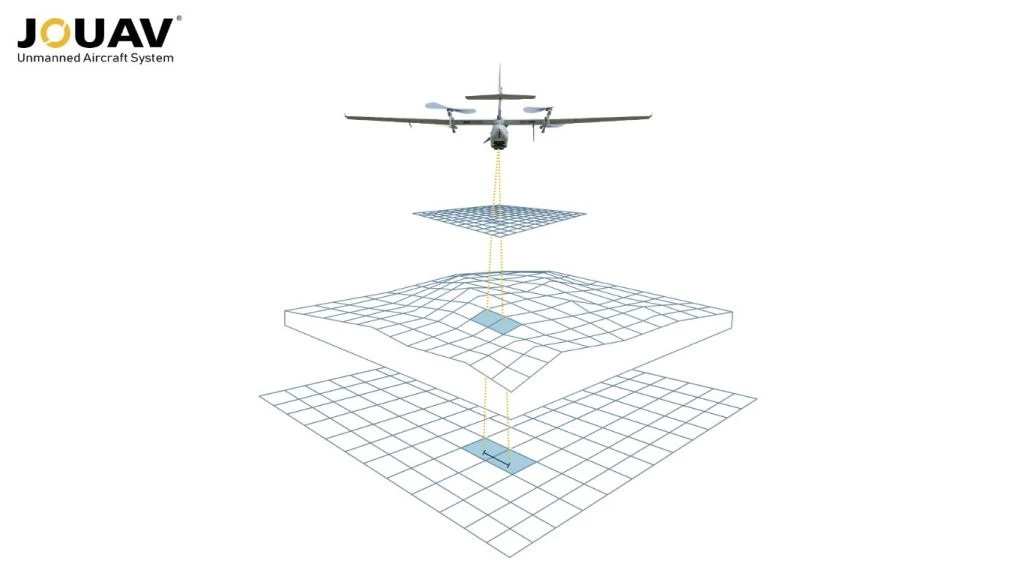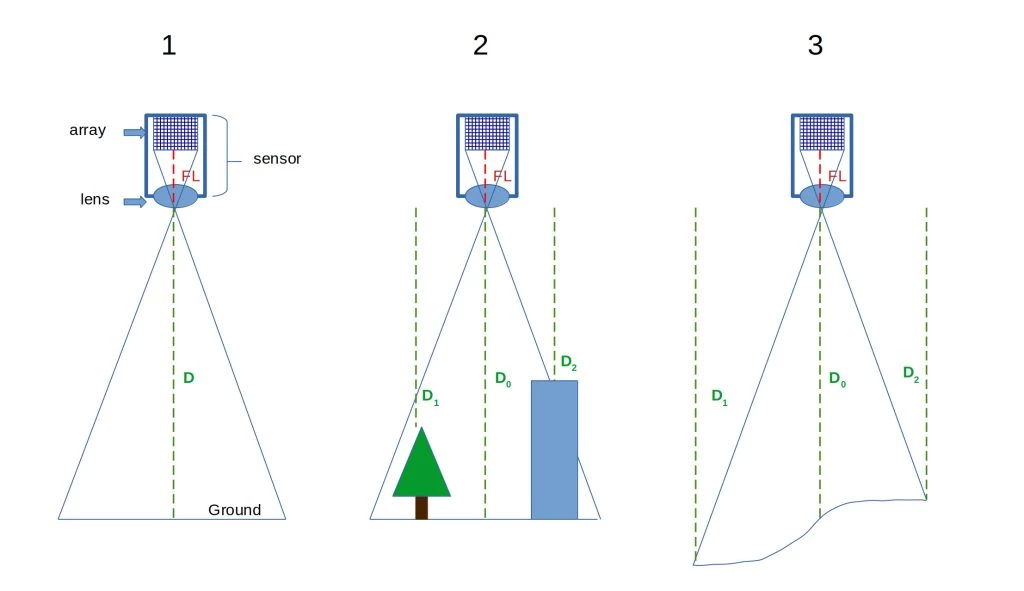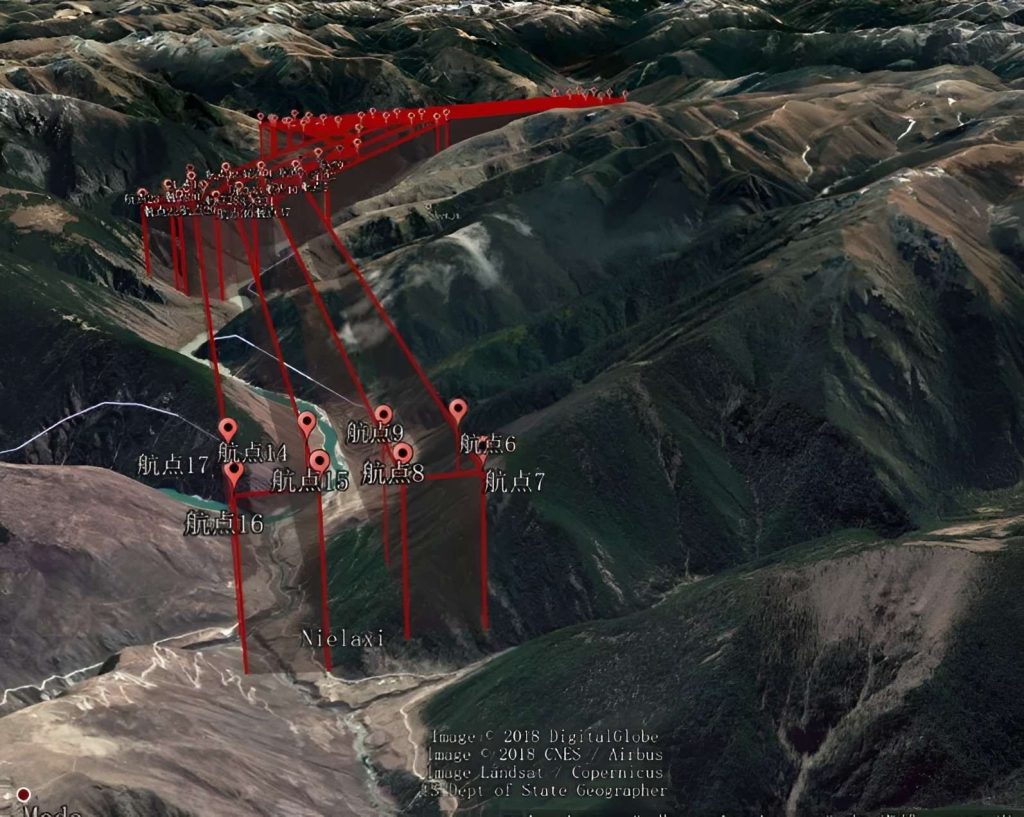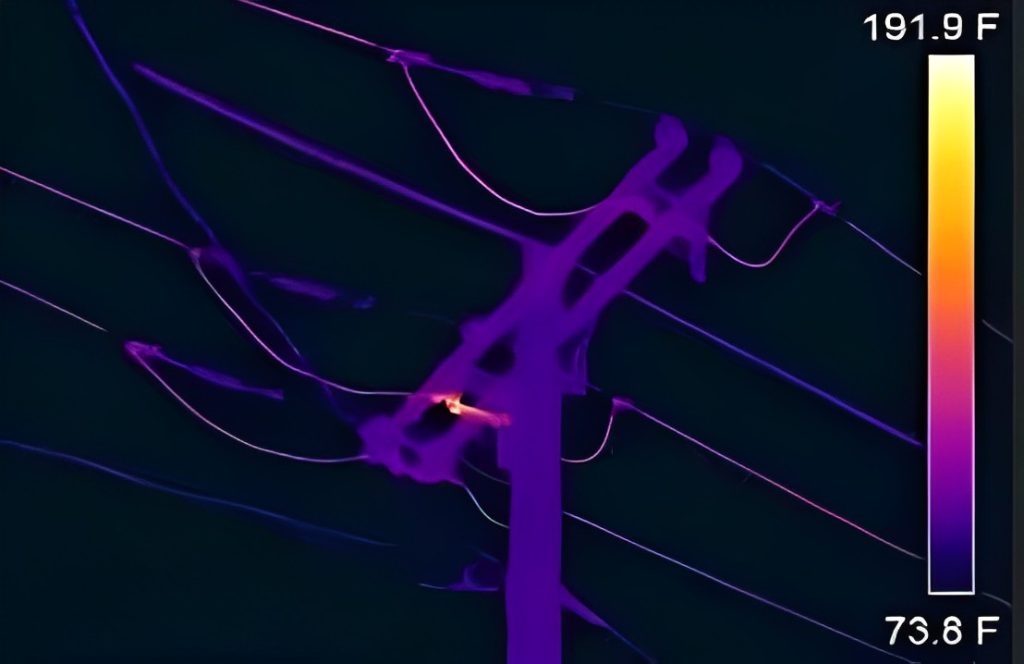If you’ve ever used drones for surveying, you’ve probably come across the term “Ground Sample Distance†or GSD.â€
This isn’t just technical jargon—it’s the key to capturing highly detailed and accurate maps from your drone flights.
This article will guide you through what GSD is, how to calculate it for your specific needs, and how it translates into sharper, more precise drone maps.
So, let’s dive in and take your photogrammetry skills to the next level!
What is Ground Sample Distance (GSD)?
Ground Sample Distance, commonly referred to as Ground Sampling Distance, is abbreviated as GSD. It represents the distance between the centers of two consecutive pixels on the ground as captured by a drone’s camera. In simpler terms, it’s the actual size of one pixel on the ground.
For instance, if the GSD is 5 cm, each pixel in the image corresponds to a 5 cm by 5 cm square on the ground. This metric is crucial because it directly affects the level of detail and accuracy in the images and maps produced by drones.

A common misunderstanding is that GSD only applies to the ground surface. However, GSD is relevant to any surface captured by the drone, whether it’s a building facade, a roof, or any other vertical structure.
For example, in roof inspections, the GSD is calculated based on the roof’s surface area rather than the ground. This broader application is why sometimes it might be more accurate to refer to it as "surface sampling distance" rather than just ground sampling distance.
Â

How GSD Impacts Accuracy in Drone Mapping?
In drone mapping, GSD quantifies the spatial resolution of aerial imagery. A smaller GSD indicates higher resolution, meaning more detail is captured in the image.
Conversely, a larger GSD signifies lower resolution, with less detail visible. The GSD is determined by factors such as the altitude of the drone, the focal length of the camera, and the sensor size.

A Comparison Table Between Low and High Ground Sample Distance:
| Feature | Low GSD | High GSD |
| Pixel Size | Smaller | Larger |
| Image Detail | Higher | Lower |
| Data Accuracy | Higher | Lower |
| Flight Altitude | Lower | Higher |
| Image Capture | More images | Fewer images |
What is the Difference Between GSD and Spatial Resolution?
GSD and spatial resolution are often used interchangeably to describe image quality and detail, but they refer to different aspects of image data.
Definitions
Ground Sampling Distance (GSD) defines the size of a single pixel in an image as measured on the ground.
This metric is calculated using the sensor's focal length, sensor array dimensions, and the distance between the sensor and the ground at image capture, typically indicated by the altitude of the aircraft or satellite.
On the other hand, spatial resolution encompasses the size of pixels within an image relative to real-world objects or terrain features in focus.
Unlike GSD, which focuses on ground-level pixel dimensions, spatial resolution varies based on object distance from the sensor. Objects closer to the sensor appear more detailed, while those farther away may appear less detailed.
Measurement Focus
GSD is a direct measure of the ground distance represented by each pixel. A smaller GSD indicates a higher-resolution image, meaning more details can be discerned.
Spatial Resolution is about the sensor’s capability to distinguish between closely spaced objects. A higher spatial resolution means the sensor can detect smaller objects or details in the image.
Variability
In a scenario where the ground is flat (scenario 1), the distance (D) between the sensor and the ground is consistent across the image, resulting in equal spatial resolution and GSD throughout the scene.
However, in scenarios where objects vary in height or the image includes areas with variable surface relief (scenarios 2 and 3), spatial resolution diverges from the calculated GSD. Objects closer to the sensor exhibit higher detail, while those farther away show lower detail.

Image credit: stackexchange.com
Why is Ground Sample Distance Important for Photogrammetry?
When it comes to transforming drone imagery into precise 3D models through photogrammetry, GSD becomes an absolute game-changer.
Accurate Measurements
A well-calculated GSD facilitates highly accurate measurements of objects on the ground. Utilizing top-quality software, surveyors can achieve measurements that are within just a few centimeters of real-world measurements.
This level of accuracy is indispensable for a wide range of high-level survey applications, including mining, earthworks, civil construction, and waste management projects.
High-Quality Models
Detailed 3D models are the lifeblood of many photogrammetry applications. A lower GSD ensures that finer features and textures are captured in the drone images. This allows photogrammetry software to reconstruct highly detailed 3D models that accurately reflect the real world.
Imagine trying to create a detailed model of a building facade – with a lower GSD, you can capture even small details like brickwork patterns or window frames, resulting in a more realistic and informative model.
Comparing Imagery
When comparing or integrating different datasets, considering GSD is crucial for ensuring consistency and accuracy. Differences in GSD can lead to misalignments and inaccuracies, highlighting the importance of maintaining GSD consistency for reliable data analysis and decision-making.
Precision Planning
The fundamental importance of GSD lies in its direct impact on survey accuracy. GSD serves as a cornerstone for surveyors to meticulously plan their drone flights.
It dictates essential parameters such as the altitude from which the camera will capture images and specific camera settings like sensor width, focal length, and image resolution.
Note: It's important to remember that GSD can be affected by variations in elevation across the survey area. For instance, flying over a large pit or a tall mound can impact the consistency of GSD across the entire model.

What is the Ideal Ground Sample Distance?
Determining the ideal Ground Sample Distance (GSD) depends on the specific application, which can be broadly categorized into two groups: mapping and inspection. The GSD required for each scenario varies based on the level of detail and accuracy needed.
Precise Mapping
A lower GSD value translates to a more accurate survey. Your survey's accuracy cannot exceed the GSD. For UAV photogrammetry, the typical GSD range falls between 1.5 to 2.5 cm/px (0.6 to 1 inch). Professional surveys often recommend a GSD of 1 cm/px for optimal accuracy, though this is quite low.

High-Detail Inspections
For tasks that require highly detailed inspections, such as analyzing cracks in a building facade, identifying individual roof shingles, or inspecting for corrosion on power lines, a lower GSD (ideally below 1 cm) is recommended. A finer GSD allows for zooming in and seeing fine features with greater clarity.

Ideal GSD Ranges for Common Applications:
| Application | Ideal GSD Range | Focus |
| Facades/Roofs Inspections | 1 cm or less | Capture cracks, defects, material condition |
| Construction Site Monitoring | 1.5 - 2.5 cm | Monitor progress, identifying potential issues |
| Stockpile Volume Calculations | 5 - 10 cm | Accurately estimate stockpile volumes |
| Topographic Mapping | 1 - 5 cm | Map terrain features, creating elevation models |
| Environmental Monitoring | 8 - 15 cm | Monitor vegetation health, identify changes |
| Large Scale Urban Planning | 10 cm | Capture broad geographic features |
To achieve a high level of GSD, consider the following factors to capture more details:
- Reduce Altitude
- Increase Camera Sensor Resolution
- Increase Focal Length
Achieving sub-centimeter accuracy in surveys often involves using high-resolution image sensors and integrating Post-Processed Kinematic (PPK) data.
For example, the CW-25E drone equipped with the DG10 oblique camera achieves a GSD of 3 cm (1 inch) even when flying at an altitude of 300 meters (984 feet), providing high survey accuracy.
Bicycle Pedal, Bicycle Pedals, Alloy Pedal, Alloy Pedals, Plastic Pedal, Plastic Pedals, Mountain Bike Pedals,Clipless Bike Pedals,Mtb Mountain Bike Pedals
Xingtai Yiming Bicycle Co., Ltd , https://www.ymbicycleparts.com